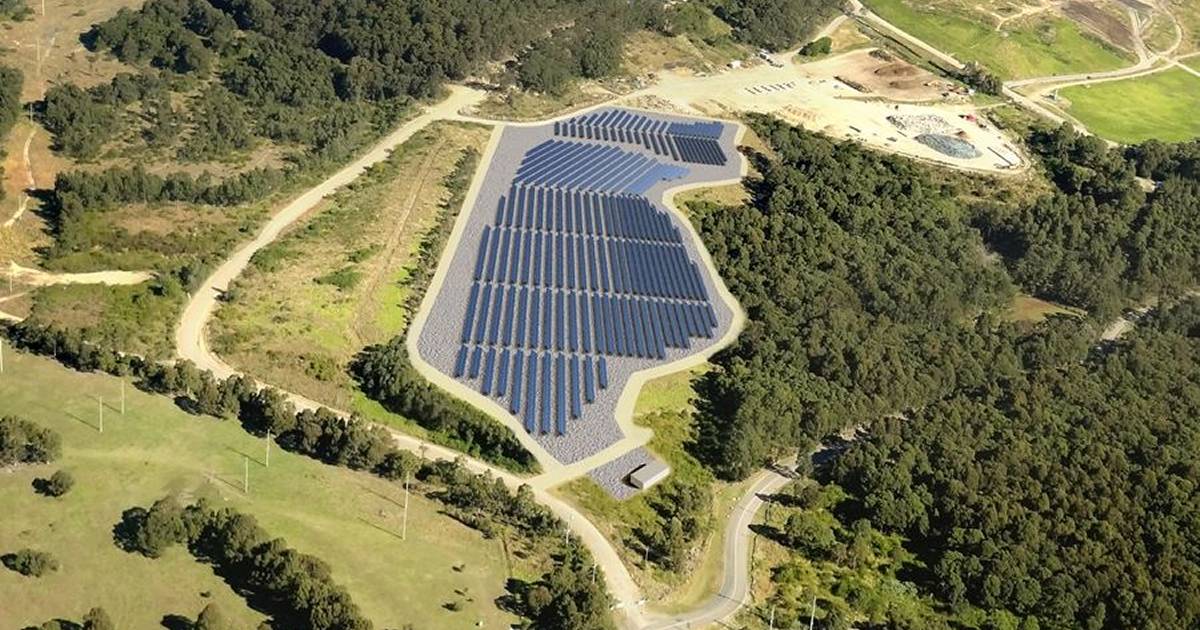City Of Newcastle’s solar farm started cranking clean electricity two years ago, and Council has continued to install panels across its assets since.
The City’s 5MW solar power facility commenced operations in November 2019; although the formal “switch-on” ceremony didn’t occur until the following month. The clean power station was built on a capped landfill cell at Summerhill Waste Management Centre, which was previously part of a coal mine – it’s land that has seen some pretty hard times.
The $8 million project boasting 14,500 solar panels is expected to save ratepayers approximately $9 million (after costs) over its expected 25 years of service.
Added to that is 900 kilowatts of solar power capacity installed across 16 council sites, 100 kW of the total installed this year. There’s more to come, with planning under way to install panels atop the Civic Theatre.
Through all this PV and a power purchase agreement (PPA) sourcing electricity from Sapphire Wind Farm, the City’s electricity use is fully covered by renewable energy.
City of Newcastle has set a target of net zero emissions for its operations by 2030. While it has already attained 100% renewables, we can expect to see more solar panels on City assets in the years ahead. Council’s Climate Action Plan 2021-2025 also has aspirational goals for the entire community that include 100 MW of new renewable generation capacity.
City Of Newcastle LGA Solar Statistics
Figures from the Australian Photovoltaic Institute indicate there have been more than 14,340 solar installations in the local government area to the end of September this year, for a total capacity of 81.5MW. APVI estimates 21.5% of suitable dwellings in the LGA have systems installed. While the City of Newcastle LGA lags behind the NSW figure of 26.5%, perhaps Council’s efforts and leading by example will see that change.
It certainly makes good financial sense to install solar panels, whether that’s at a large-scale or on the rooftop of homes. SolarQuotes’ solar calculator indicates a 6.6kW system installed in Newcastle has a simple payback period of around 4 years and 3 months. Based on a feed-in tariff of 12c and 19% solar energy self-consumption, this system would provide electricity bill savings of around $1,500 a year.
If you live in the region and are considering installing panels, you can find great solar installers servicing Newcastle here.
Coal To Clean Energy Transition In The Hunter
Newcastle has been closely associated with coal for many years and hosts Australia’s largest coal export facility. From there, the little black climate bombs are sent on their way to wreak havoc across the world. The broader Hunter Region also has a long history of ripping the problematic rock out of the ground.
But the times, they are a-changin’. Every Hunter Region LGA has signed on to the Cities Power Partnership, Australia’s largest local government climate network. And back in June, Hunter Joint Organisation and each of its member councils inked an agreement with a goal of accelerating clean energy initiatives and related jobs in the region.
While perhaps the coal industry won’t disappear from the Hunter region any time soon, it’s great to see its local governments have seen and understood the writing on the wall – and are acting on it.


 RSS - Posts
RSS - Posts



Why so little savings – re “The $8 million project boasting 14,500 solar panels is expected to save ratepayers approximately $9 million (after costs) over its expected 25 years of service” When I put a solar panel on my roof I expect it to save me approximately $100 per panel per annum. That is based on 6 years of data across my paltry 44 panels – but broaden by a Facebook user base of almost 2,500 members showing per panel, per annum savings from $65 to $110, Why so low savings modeled – what am I missing in the value analysis?
Rather than directly offsetting the Council’s retail electricity bills, I’d guess the Power Purchase Agreement is based on wholesale electricity prices.